Complete the following reactions:
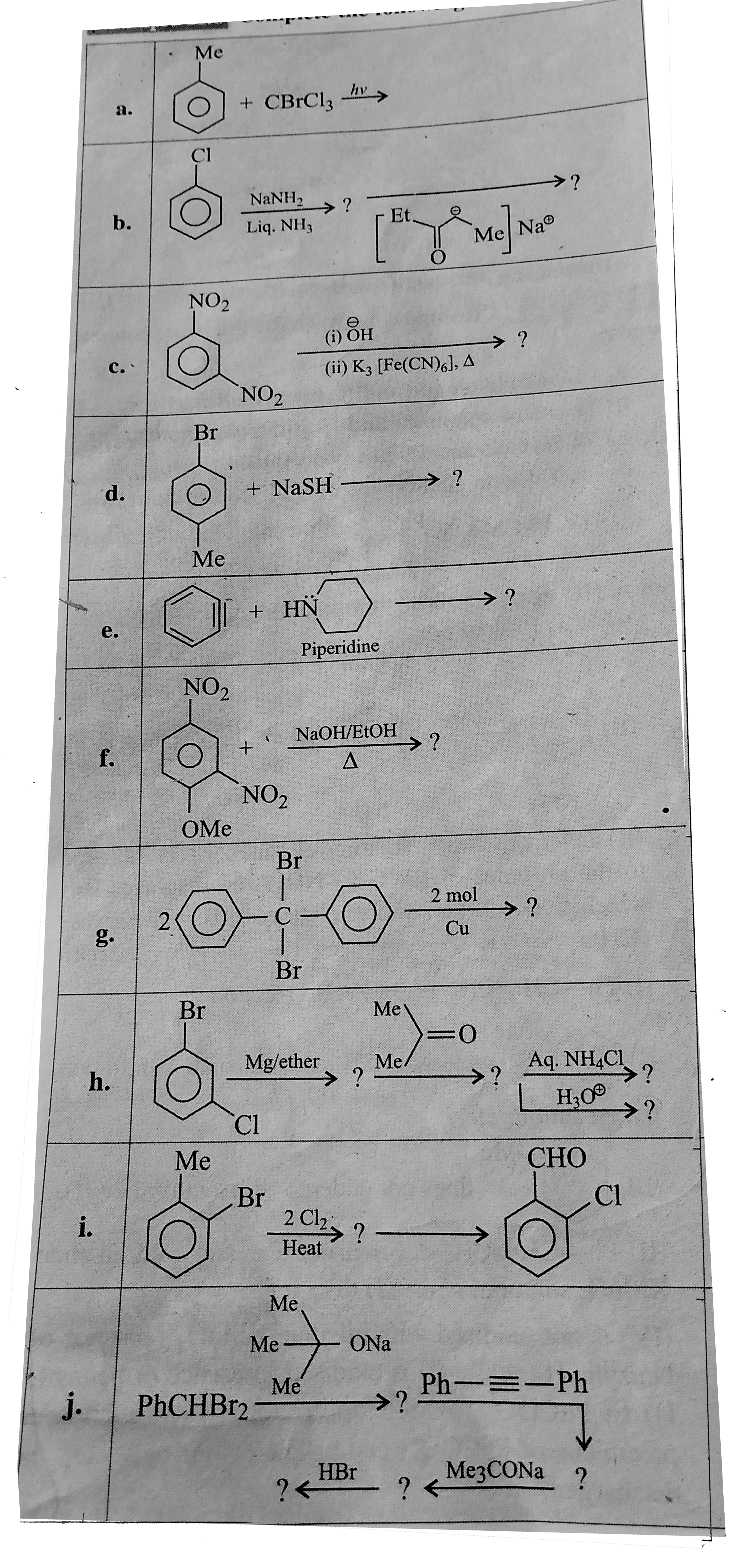
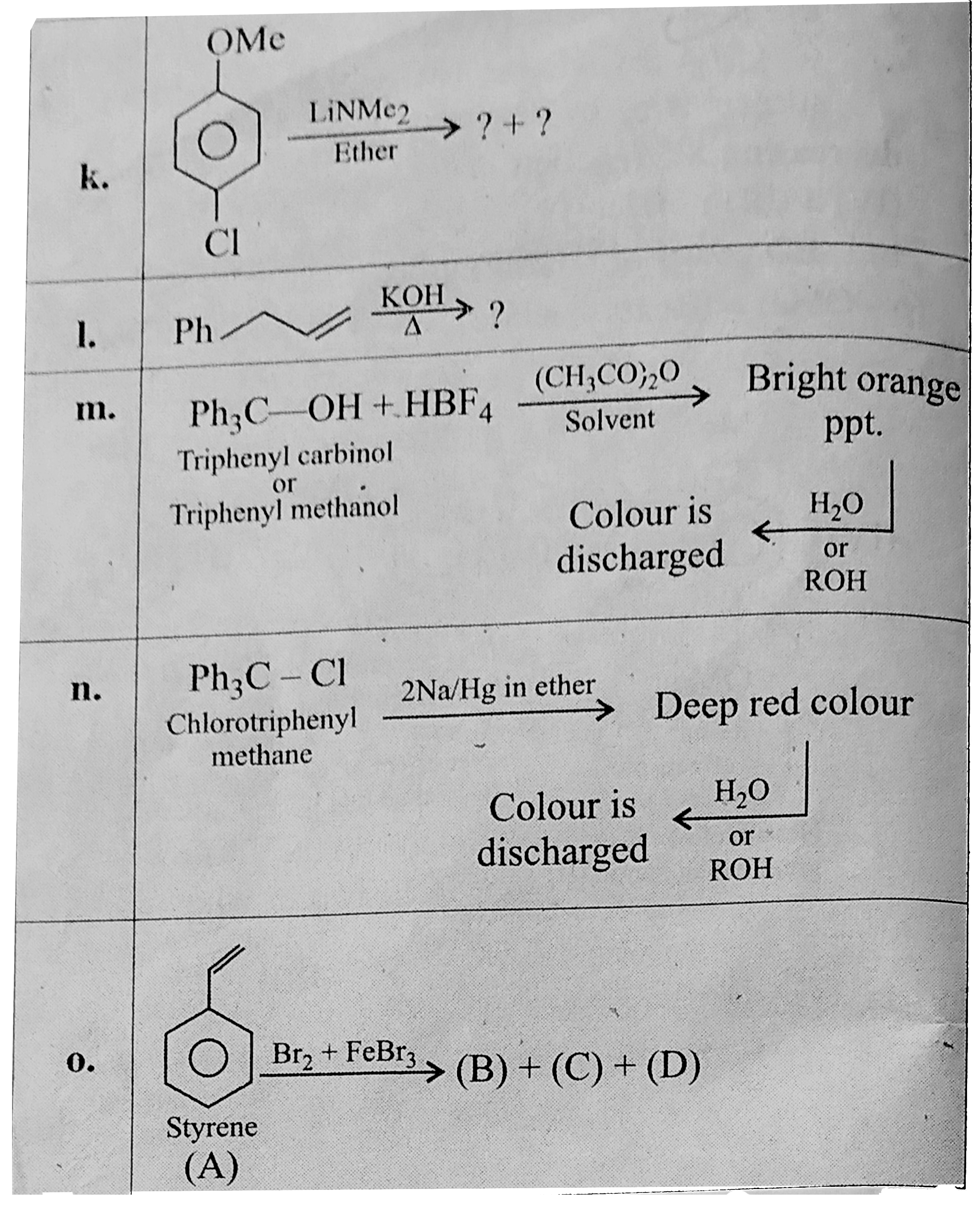
Text Solution
Reaction proceeds by freee radical mechanism because in the presence of light, radicals are formed (C−Br) bond is weaker than (C−Cl) bond and hence (C−Br) bond breaks to give Br.
CBrCl3hv−−→Bdor(r)+.CCl3
Attack by (.CCl3) on toulene occurs at the Me side chain and not in the ring becuase (c−H) bond of Me is weaker than (C−H) bond of ring. Moreover, benzyl readical is more stable than aryl radical.
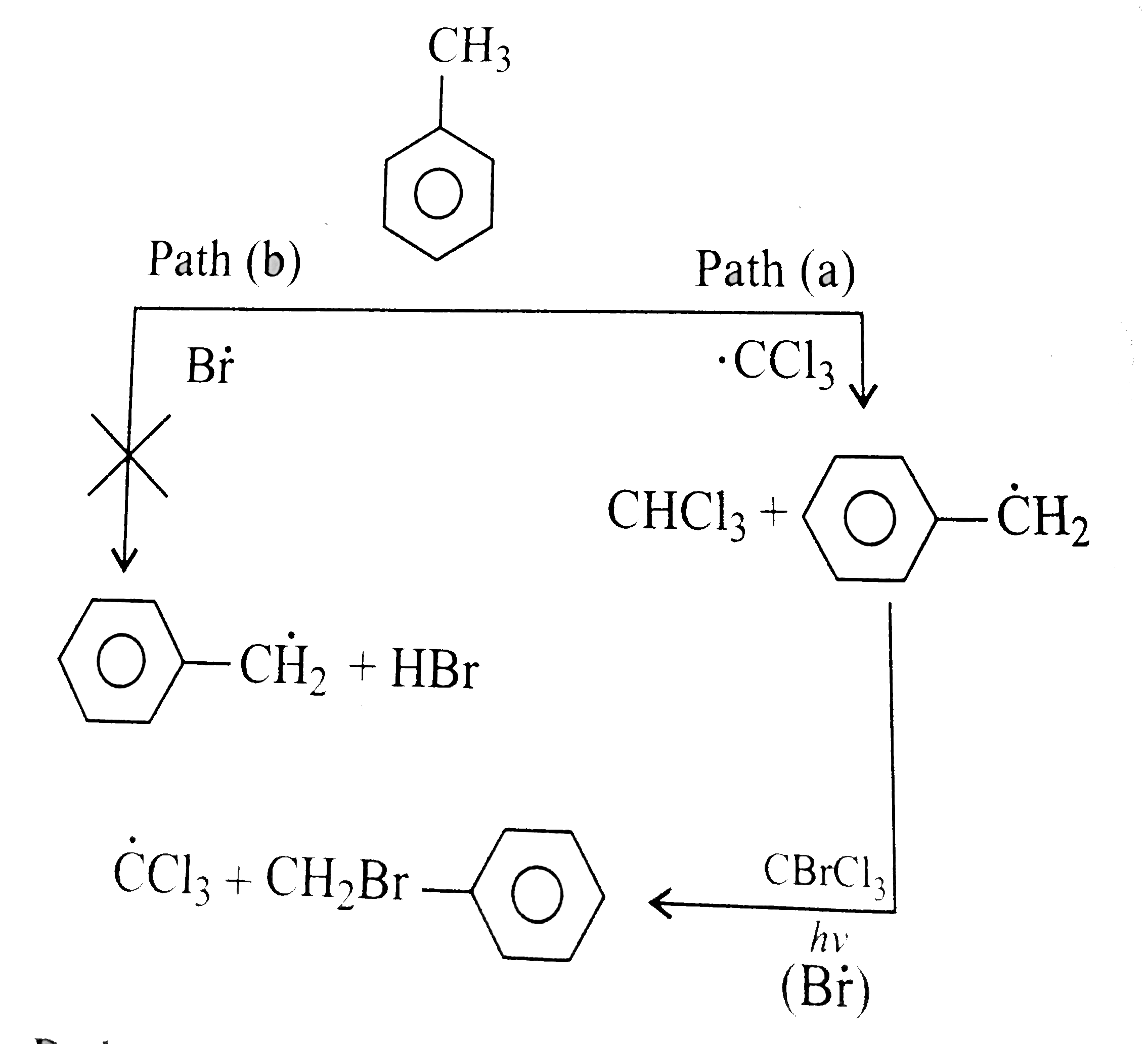
Path (a) is favorable beacause the formation of CHcl3 is more stable than the foremation of HBr. It is becuase (C−H) bond in CHCL3 is stronger than (H−Br)1 bond.
b. It is an example of ArSN (elimination- addition ) reaction via benyenne.

C. It is an example of ArSN (addition-elimination) reaction due to the presence of strongtly EWG [two (−NO2) groups]. H atom at o− and p− to (−NO2) group will be most activated and is attacked by nuclophile (OH)⊕ at these positons. K3[Fe(CN)6] is an oxidiasing agent to remove proton from the complex.
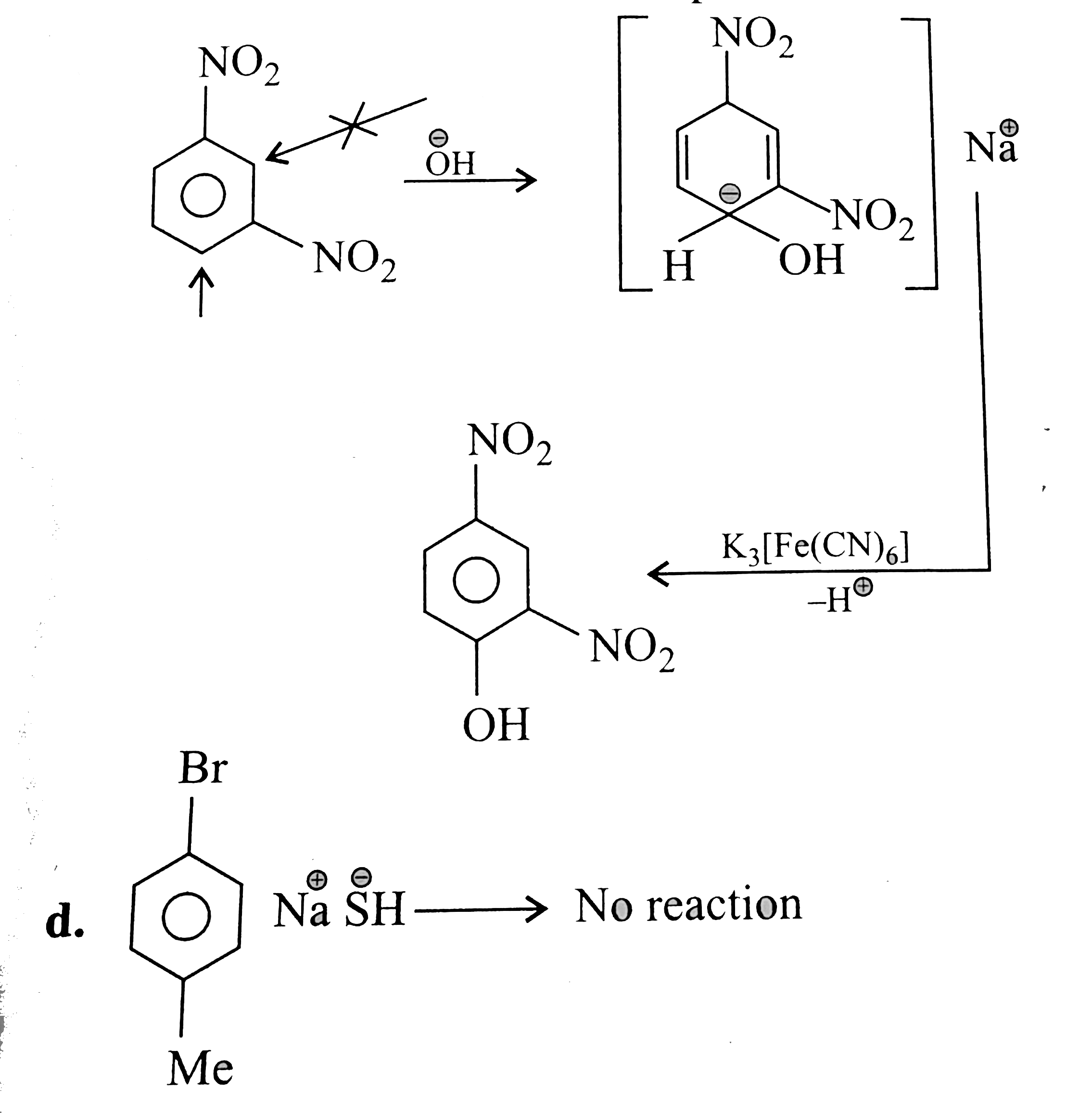
Since therer is no EWG present in the ring to activate the (−Br) group, it does not undergo ArSN reaction.
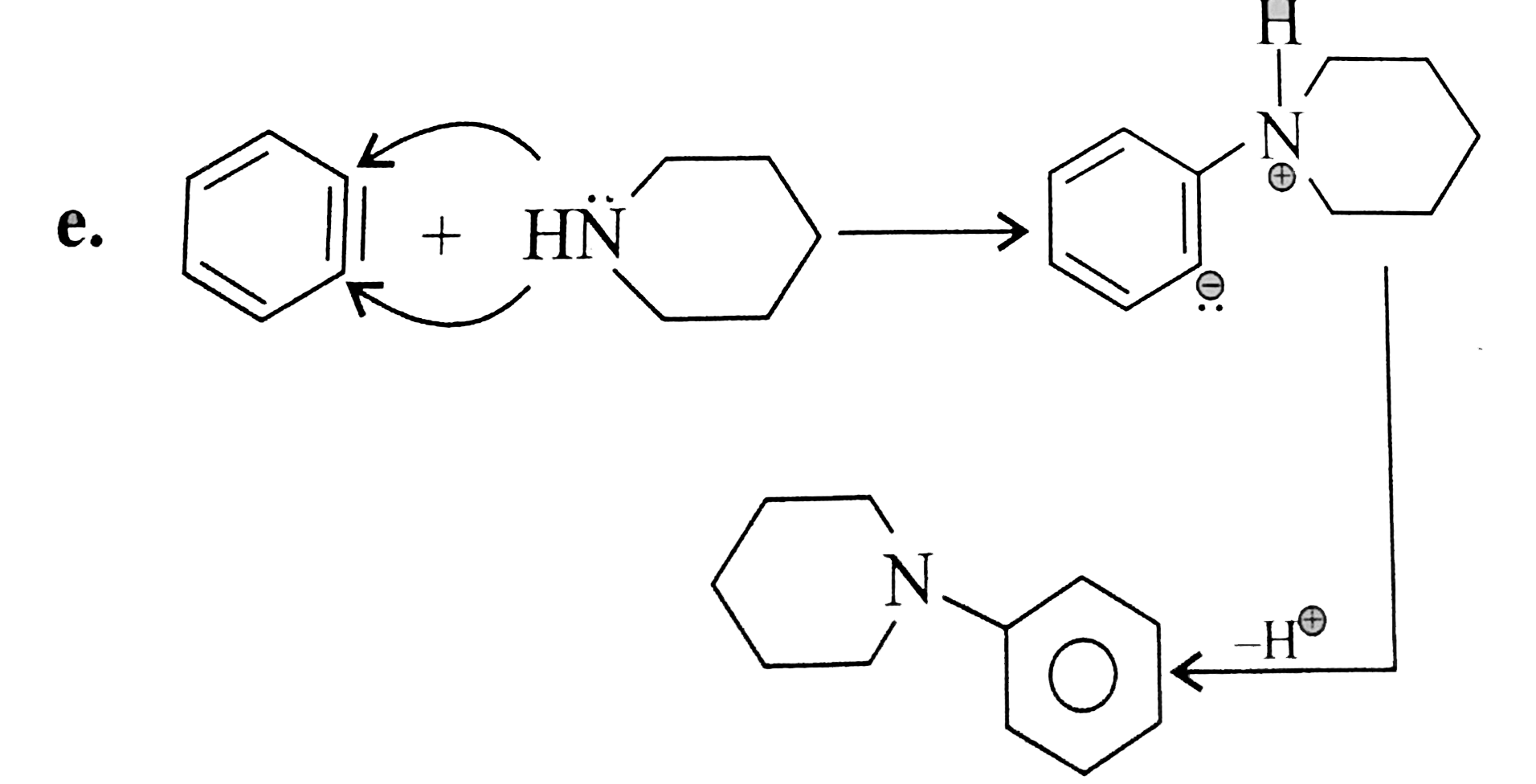
f. EtOH+NaOH→EtOo−Na⊕+H2O
It is an example of ArSN (addition - elimation) reaction becuase of the presence of strong EWG(−NO2) at o− or and p− positon to the ejecting (−OMe) group. Nucleiphile is ErO
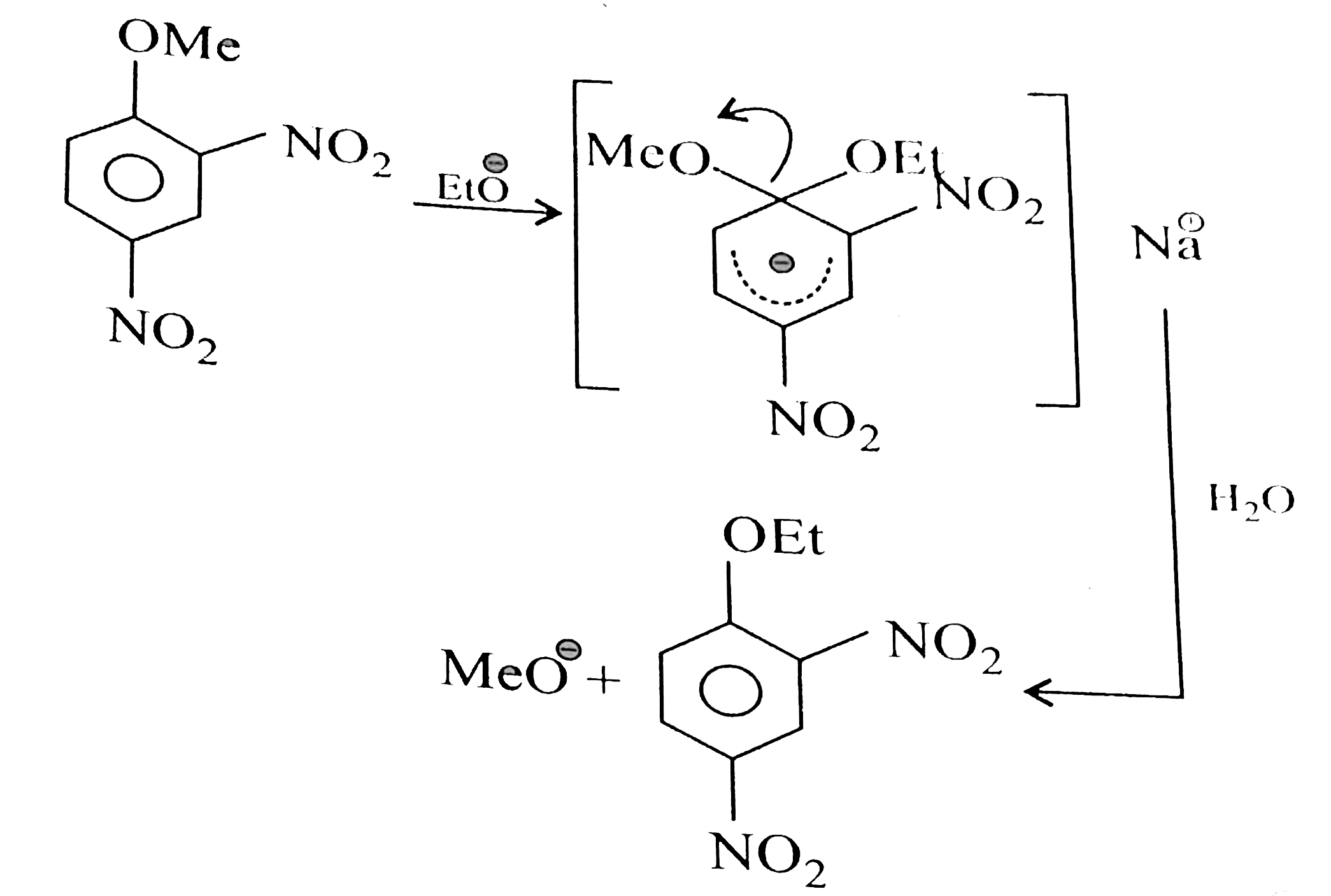
EtO is a stronger muclenuclophile than ejecting (OMe) group and also MeO is a better leaving gruop than EtO .
g. This is an example of extension of Wurz reaction (RX+Na,Cu, etc) The use of 2mol reagent adn Cu suggests the formation of an alkene.
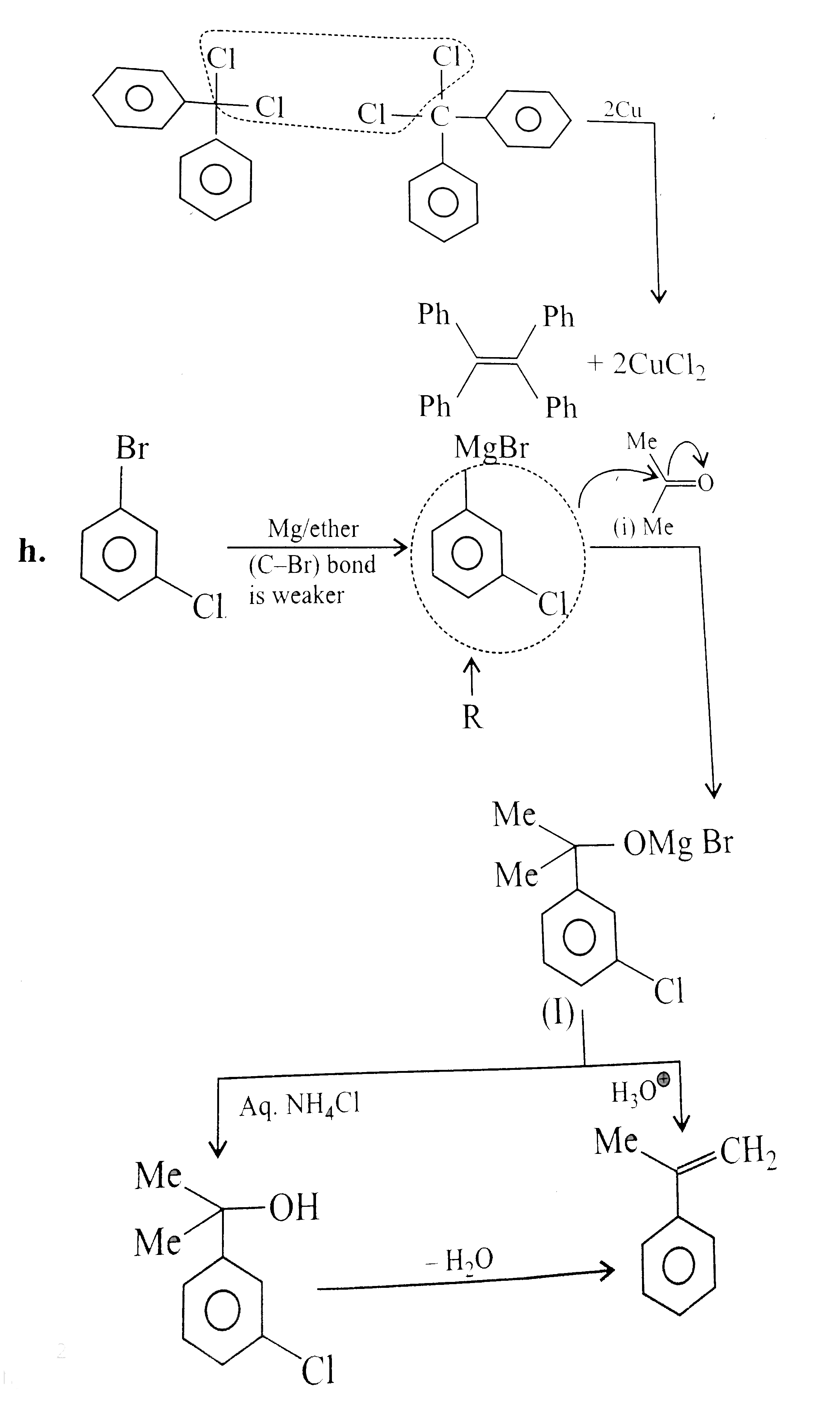
Hydroluysis of Grignard intermidate (I) in aquenous NH4CL gives alcohol but in acidic hydrolysis, the dehyration of alcohol occurs to give alkene.
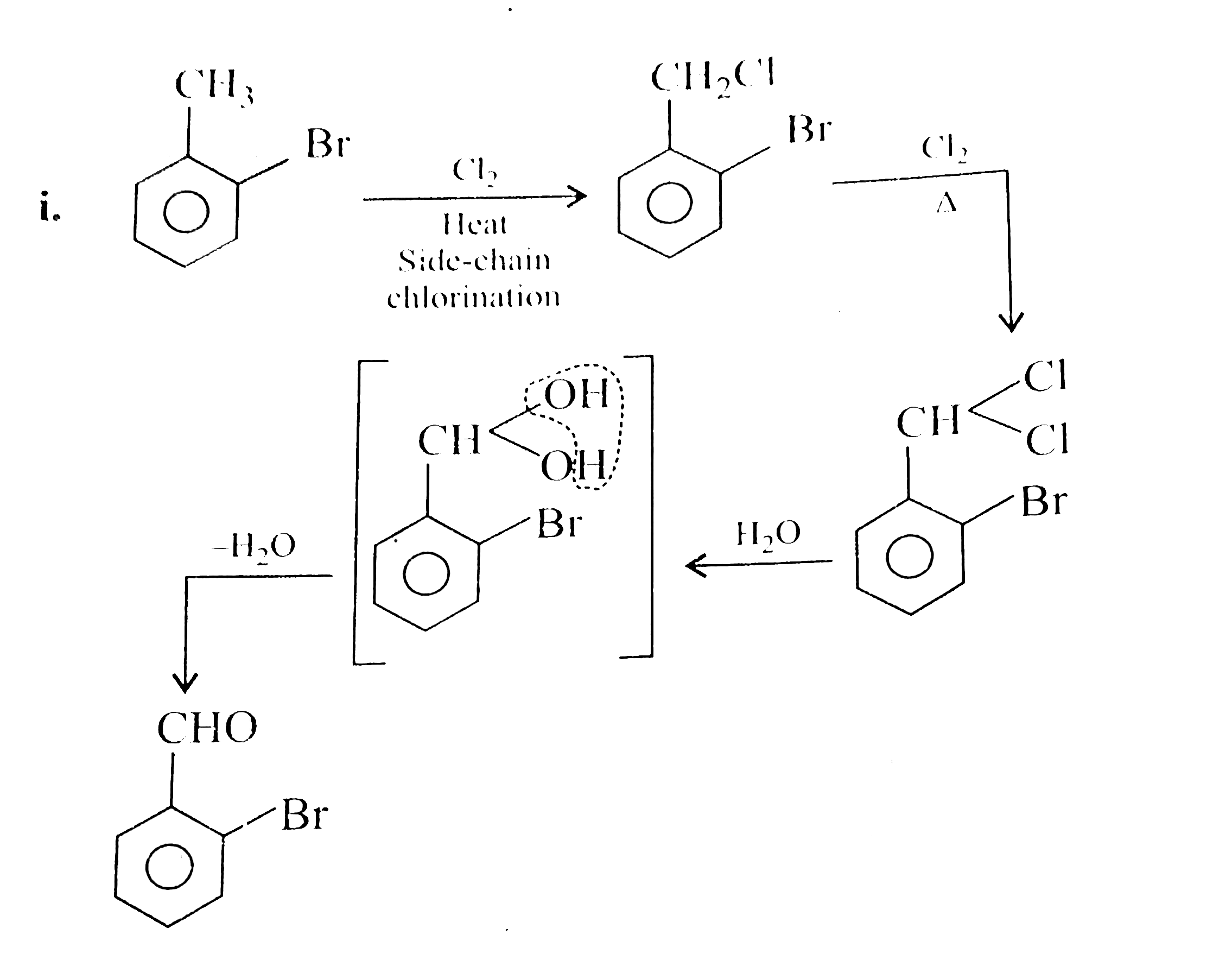
J. Teh absense of β−H atom suggests α− elimination via the formaation of carbene intermedicate which forms ring with (C=C)

k. It is an example of ArSN (elimation-addition) reaction via benzene since strong EWG,o− or/and p− to the elininating group is not present. Thus. ArSN (addition-eleimination) is not possible, (: overset(o-)(N) Me_(2))group∈(LiNMe_(2))actsasabase→removeorh→-Ha→m→theelim∈at∈ggroup.<br><imga≤ocr_imageload∈g=lazysrc=https://d10lpgp6xz60nq.cloudfront.net/physics_images/KSV_CHM_ORG_P2_C11_S01_063_S08.pngwh=80%mx-autosty≤=background:white;><br>Thererran≥ment∏ucthas∈creasedconjuˆionwithther∈ganditisathermodynamicallycontrol≤d∏uct(T.C.P)andistherest–ofabnequilibrium−con→ol≤dreaction.Hence,the⋆t∈gmaterialisthek∈eticallycontrol≤d∏uct(K.C.P).<br>TheconsersionofK.C.P→T.C.P.isdue→thetheremovalofalpha-Ha→mbybase,andalpha-Ha→misaccdue→the-Ieffectof(Ph-)group.<br><imga≤ocr_imageload∈g=lazysrc=https://d10lpgp6xz60nq.cloudfront.net/physics_images/KSV_CHM_ORG_P2_C11_S01_063_S09.pngwh=80%mx-autosty≤=background:white;><br>m.ThestrongacHBF_(3)convertsthealcohol→tehsa<ofverystab≤Ph_(3)C^(o+)becuaseof∂ocalisationofposi→nchar≥→threePhr∈gs.TheadditionofH_(2)Oconvertstheion→Ph_(3)C =- OHandadditionofROHconvertstheion→Ph_(3)COR<br><imga≤ocr_imageload∈g=lazysrc=https://d10lpgp6xz60nq.cloudfront.net/physics_images/KSV_CHM_ORG_P2_C11_S01_063_S10.pngwh=80%mx-autosty≤=background:white;><br>n.Strongreduc∈ga≥nt,suchasNa//Hgamalgam,convertsPhC - Cl→thesodiumsa<,verystab≤Ph_(N82)C^(o-)(tripenylmetylortriylanion)becuaseof∂ocalisationof¬ativechar≥→therePhr∈gs.Thes→ronglybasiccarbanionaeptsH^(o+)omeitherweaklyaccH_()OorROHgiv∈gcoo–ur≤ssPh_(N82)CH<br><imga≤ocr_imageload∈g=lazysrc=https://d10lpgp6xz60nq.cloudfront.net/physics_images/KSV_CHM_ORG_P2_C11_S01_063_S11.pngwh=80%mx-autosty≤=background:white;><br>Sincethebenze≠r∈gdoes¬conta∈anyEDG(activggroup)forSEreactionandv∈yl(-CH=CH_(2))groupisaweaklyactivat∈g(ando,p-direct∈g)soSEreactionwtihE^(o+)(Br⊕) is very slow, Hence, Br2 first adds to the double bond to from major contributing (I) (due to the retentiionion of aromaticaly). leading to the product (II)
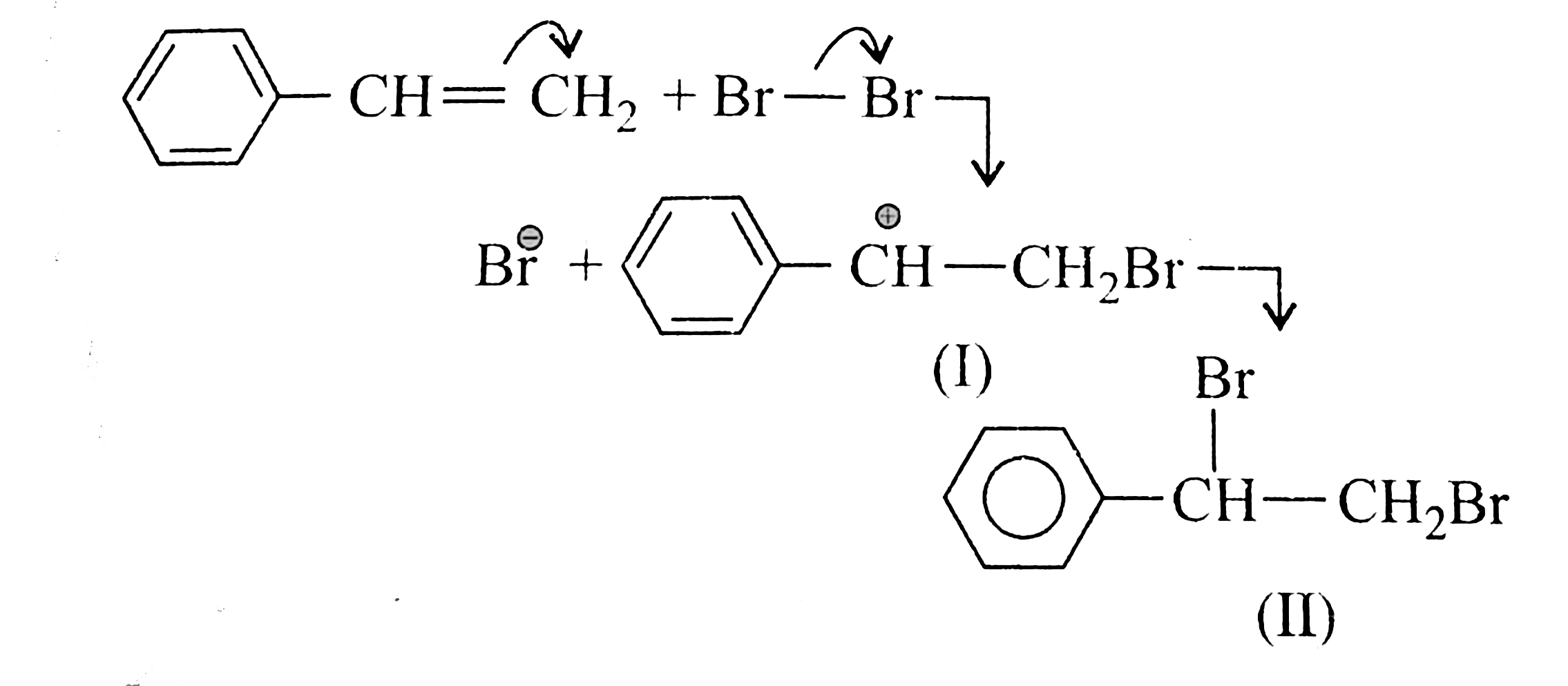
|
Topper's Solved these Questions
- AROMATIC COMPOUNDS AND ALKYL AND ARYL HALIDES BOOK - CENGAGE CHEMISTRY ENGLISHCHAPTER - AROMATIC COMPOUNDS AND ALKYL AND ARYL HALIDES EXERCISE - Solved Problems
37 Videos
- AROMATIC COMPOUNDS AND ALKYL AND ARYL HALIDES BOOK - CENGAGE CHEMISTRY ENGLISHCHAPTER - AROMATIC COMPOUNDS AND ALKYL AND ARYL HALIDES EXERCISE - Exercises Subjective Type
5 Videos
- AROMATIC COMPOUNDS AND ALKYL AND ARYL HALIDES BOOK - CENGAGE CHEMISTRY ENGLISHCHAPTER - AROMATIC COMPOUNDS AND ALKYL AND ARYL HALIDES EXERCISE - Archives Subjective Type
4 Videos
- APPENDIX INORGANIC VOLUME 2BOOK - CENGAGE CHEMISTRY ENGLISHCHAPTER - APPENDIX INORGANIC VOLUME 2EXERCISE - Short Answer Type
179 Videos
- BIOMOLECULESBOOK - CENGAGE CHEMISTRY ENGLISHCHAPTER - BIOMOLECULESEXERCISE - Exercises Archives (Analytical And Descriptive)
8 Videos

